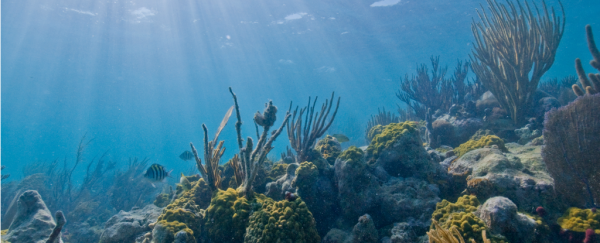There's not been much good news for the world's coral reefs lately, with images released this week of the most dramatic bleaching event to date on Australia's Great Barrier Reef, and experts predicting that climate change will eventually destroy the famous reef entirely. But researchers have now identified corals hiding in plain sight that are not only surviving increased acidification and warming temperatures, but appear to be thriving in them.
A team of Australian researchers from the University of Technology, Sydney has just returned from New Caledonia, where they were able to investigate this 'extreme coral', and figure out what makes it so hardy, and whether it could help save other reefs - and the species they support - around the world.
The coral we usually think of are located in tropical coral reefs - of which the Great Barrier Reef is an awesome example. But there's also coral that lurks around the corners of these pristine reefs – for example, in murky mangrove-rich areas - which scientists have shown are much tougher than their pristine counterparts.
Mangroves are small trees that grow in coastal salty water, mostly in tropical and subtropical climates. The water around them is usually thick and muddy, and not somewhere you'd think to look for coral, but these extreme corals are a little different.
"The corals … thrive in relatively acidic and hot mangrove waters; visibility is not great so they often go unnoticed," said one of the researchers, David Suggett. "We want … to understand how corals can adapt and thrive to extreme environments that potentially represent the future for many reefs worldwide."
So why travel to New Caledonia? The reef there, which is kind of like a mini version of the Great Barrier Reef, has amazing diversity in its coral population. "Despite the fact that among the 800 coral species described in the world, more than 401 were identified in New Caledonia we are only starting to really uncover the diversity and abundance of corals here," said New Caledonian researcher, Riccardo Rodolfo-Metalpa. "And, importantly, whether these corals are resilient to human stressors, including climate change."
Climate change is a huge problem for many kinds of corals. As ocean temperatures rise, corals can shed the symbiotic algae living in their tissue, which causes them to starve and turn white. Increased CO2 in the atmosphere is also making the ocean more acidic, which stops corals from calcifying properly.
But these extreme corals, which are happy growing in around 33 degrees Celsius, could be the key to determining if some corals will survive the transition.
"Global research predicts a poor future for reefs. An important step in reef management is therefore identifying 'refuges' that will enable coral populations to thrive as most reef environments decline," says one of the team, Emma Camp.
Although they've now identified these impressive coral species, there's plenty of information they still need to uncover about them, such as, how different are they to similar, less hardy species? "We don't really know whether the coral populations in these mangroves are a distinct, genetically isolated community that has evolved over hundreds of years, or whether they represent a supply of corals coming continually from the main reef, and they just happen to be extremely physiologically plastic," Suggett told the Think: Sustainability podcast.
"We are frantically pouring through our data to find the 'smoking gun' that has enabled them to be so stress resilient," he added. "Whilst it is tempting to be optimistic from our findings that corals can adapt to climate change-like scenarios, we have a long road ahead to understand the complex mix of conditions that actually allow corals to thrive within hot-acidic mangrove waters."
Fingers crossed these kinds of corals can at least give the ocean (and us) some much needed hope.
UTS Science is a sponsor of ScienceAlert. Find out more about their research.
